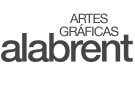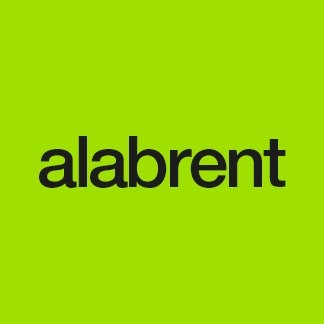Redacción Alabrent
They were treated to a comprehensive overview of the latest technologies, including a number of exciting innovations with potential to redefine the production of folding cartons. A series of presentations dedicated specifically to the segments food, non-food, pharmaceuticals and cosmetics, following up an overarching branch analysis from the perspective of a brand-name manufacturer, served to maximise the information value of the event for every one of the gathered experts.As the keynote speaker, Thibaud Carlier, EMEA Purchasing Group Manager for Carton and Labels at Procter & Gamble, outlined some of the demands which brand manufacturers place on the packaging branch, both today and with a view to the future. Alongside its transport, storage and dispensing functions, packaging should stimulate the consumer to make a purchase decision. The form, visual design and feel of these “silent promoters” at the point of sale thus play a decisive role. Packaging is an instrument of communication and is intended to spread delight. Further important requirements and functions are product compatibility, reproducibility, cost effectiveness, information on the contents, product protection, compliance with laws and regulations, added utility value, environment-friendliness, etc.
Nowadays, countless channels are available to influence a purchase decision, but only a few relate directly to the packaging. Furthermore, there is a clear divergence between the in-store and in-home roles of packaging. According to a study conducted by Pro Carton, in-store packaging is a top performer across all categories. It offers detailed product information, promotes the purchase decision, is environment-friendly, motivates repeat purchases, encourages recommendation to new customers and exemplifies the high quality of a product. For a whole range of product types, from food, via cleaning products to personal care, non-prescription drugs and cosmetics, it is the packaging which determines more than 50% of purchase decisions.
Packaging should speak the media language
Packaging is moreover the only medium which is guaranteed to attract the attention of 100% of the target group. Consequently, it should also speak the media language, with eye-catching decoration and shapes, with an image to promote the product, and with qualities demonstrating sustainability (renewable, recyclable, re-usable). Since packaging has become media, its lifetimes are shorter and volumes are smaller. Flexibility is today an essential key – and that naturally also places new demands on the equipment and technologies used for printing.
For the remainder of the morning session, the visitors were offered a choice of presentation modules addressing both economical and technical aspects of modern packaging production, and could thus tailor their personal agenda to match individual preferences and interests.
Jürgen Veil, KBA Key Account Manager for Packaging, presented the broad spectrum of possibilities for inline finishing and product refinement in sheetfed offset. Under the heading “Xtreme Product Diversity”, he described not only established coating variants, but also sophisticated multiple coatings with interesting special effects, for example the process of micro-embossing, which was later demonstrated in practice during the afternoon. Another valuable option is that of inline die-cutting, and it was furthermore pointed out that KBA would soon also be offering its cold-foiling solution in large format. Effectiveness and efficiency were the twin themes of the presentation given by Sascha Fischer, head of KBA complete services & key account manager Europe. He introduced the range of products and services available from KBA to facilitate long-term effective and efficient operation for both new and existing presses. Job structure analyses, configuration checks, production simulations, retrofits and upgrades, approved consumables under the brand name PressConsum, performance assessments and service agreements are all factors which contribute to more effective production. Efficiency, on the other hand, can be enhanced through corresponding training for operators and maintenance staff, dedicated measuring systems on the press, production data acquisition and evaluation, production planning and control, and management information systems. Under the name “KBA Complete Services”, the company offers integrated solutions and top-of-the-class automation technologies, all flanked by comprehensive advice and consulting services. To further the aim of exploiting the full potential for optimisation in print production, KBA has joined forces with numerous technology partners, for example Kodak, Optimus, Printplus, MBO, ClimatePartner, IPM, Perfecta, Montex and Müller Martini.
Flexible and fast
“Xtreme Flexibility” was the topic for Anja Hagedorn from the KBA product marketing department. A wide range of accessory equipment enables KBA Rapida presses to be configured as highly specialised means of production, and thereby matched perfectly to the precise demands of the cosmetics, food, non-food or pharmaceuticals segments. Whether “TouchFree Guidance”, “CX”, “Antistatic Foil” or “Corrugated”, the equipment packages extend the scope of application of a press beyond the standard parameters. Rapida presses are no less flexible when it comes to dryer configurations: In conjunction with application-oriented coating supply systems, the VariDry family of dryers caters for every production requirement – from IR and hot air, via UV, through to full IR/hot-air/UV combinations.
Fellow KBA product marketing representative Jens Baumann focussed his presentation on the topic of performance. It is not only running speed, but also the implemented quality control functions and cost reductions achieved through process automation which determine the true performance of a printing press. With options for inline colour control (QualiTronic ColorControl), grey balance control according to System Brunner (Instrument Flight) or inline PDF comparison (QualiTronic PDF), KBA possesses a range of highly efficient measuring and control systems which offer significant benefits compared to those of other manufacturers and are in some cases unique on the market. Automation features such as the AniloxLoader or AniSleeve (automatic anilox roller exchange), inking unit disengagement, DriveTronic SRW (Simultaneous Roller Wash), CleanTronic Synchro (fast blanket washing with two washing beams) and DriveTronic SPC (Simultaneous Plate Change) create reserves for even higher output. At the same time, raised press foundations or non-stop pile changing and logistics systems are capable of further increasing the already exceptional performance of Rapida presses. No other medium-format press is able to match the 20,000 sph maximum speed of the Rapida 106, and speeds of 17,000 sph were similarly still considered utopian in large format printing just a few years ago. Especially in packaging printing, where long runs are common, such production speeds lend an enormous boost to the competitiveness of a print company.
After lunch, a series of parallel print demonstrations offered the packaging specialists a choice of practical insights into production for the food, non-food, cosmetics and pharmaceuticals segments. Alongside, corresponding networking solutions, management information systems from Optimus and real-time production data acquisition systems from Logica were presented in the Complete Lounge.
High-speed print demos in large format
A six-colour Rapida 145 with inline coater was shown producing green, mainly primary food packaging. The highlights of the demonstrations were the use of low-migration inks, roller washing parallel to continued production (DriveTronic SRW), simultaneous coating forme changing (DriveTronic SFC) and anilox roller exchange during production (AniSleeve). The audience's attention was also drawn to the facilities for fully automatic non-stop pile changing and pile logistics, inline PDF comparison (QualiTronic PDF) and inline colour control (QualiTronic ColorControl). Following the production of fast-food packaging on G-flute corrugated, a job and substrate change was performed to convert the press for 280 g/m2 board. This involved a coating forme and sleeve change, plate changing, a change of coating, blanket washing, and activation of the sixth printing unit in place of the first. The new pizza packaging was printed at the full speed of 17,000 sph, and the rollers of the now disengaged first unit were washed down with the press in full production. After a second fast job changeover, an example of confectionery packaging was printed on 300 g/m2 GC2 board.
The job changeovers with non-food packaging on a six-colour Rapida 164 (format 120.5 x 164 cm) in a double-coater configuration were equally swift. In addition to high-quality matt and gloss finishing with primer and a UV coating, the demonstration on this press spotlighted fast coating changes. Inline colour control (QualiTronic ColorControl) was also to be seen. The first job was a corrugated board stool (350 g/m2 board finished with matt dispersion coating and subsequently laminated onto a corrugated substrate). After the job changeover, packaging for TV sets was printed on top liner (210 g/m2); the finish was achieved with primer and UV gloss coating.
Finishing diversity in half- and medium format
A six-colour Rapida 106 with double inline coating and the cold foil transfer module KBA ColdFoil SF110 placed its focus on the production of luxury packaging for cosmetics and hair-care products. The demonstration included finishing effects based on UV gloss coating, inline embossing and cold foil transfer with the resource-saving options Web Splitting (enabling the foil web to be split into up to five ribbons) and Multi Foil Use (a turner bar system allowing the foil web to run through the impression gap several times). An automatic coating forme change and inline colour control rounded off the presentation. The production of packaging for hair colouring was followed by a plate and foil change, ready for the switch to perfume packaging. As a further highlight, micro-embossing effects were demonstrated in the second coater.
Non-food packaging was similarly the topic for the Rapida 75: With its VariDry UV dryers, foundations raised by 225 mm, high substrate flexibility and inline die-cutting, the half-format press was able to show off its exceptional capabilities. It began with a football packaging job on transparent PET with partial opaque white, four scale colours and UV coating. A change of substrate (to 240 g/m2 card) enabled production to move on to a job comprising coloured tags. Among the various makeready processes, a die-cutting forme was mounted on the coater tower; with inline die-cutting active, only final blank separation is required at the post-press stage. Parallel to this, a six-colour Rapida 106 with coater and the new cold foil transfer system ColdFoil Micro could be seen printing pharmaceutical packaging.
Further important aspects of the print demonstrations were fast ink changes (spot colours) and pile logistics. A Rapida 106 also supplied the visitors with match planners for the forthcoming World Cup tournament in Brazil. Overall, it can be concluded that KBA provided a comprehensive insight into the world of modern packaging printing, with high-performance technologies, a rich diversity of finishing options, and unique user-oriented product features.



